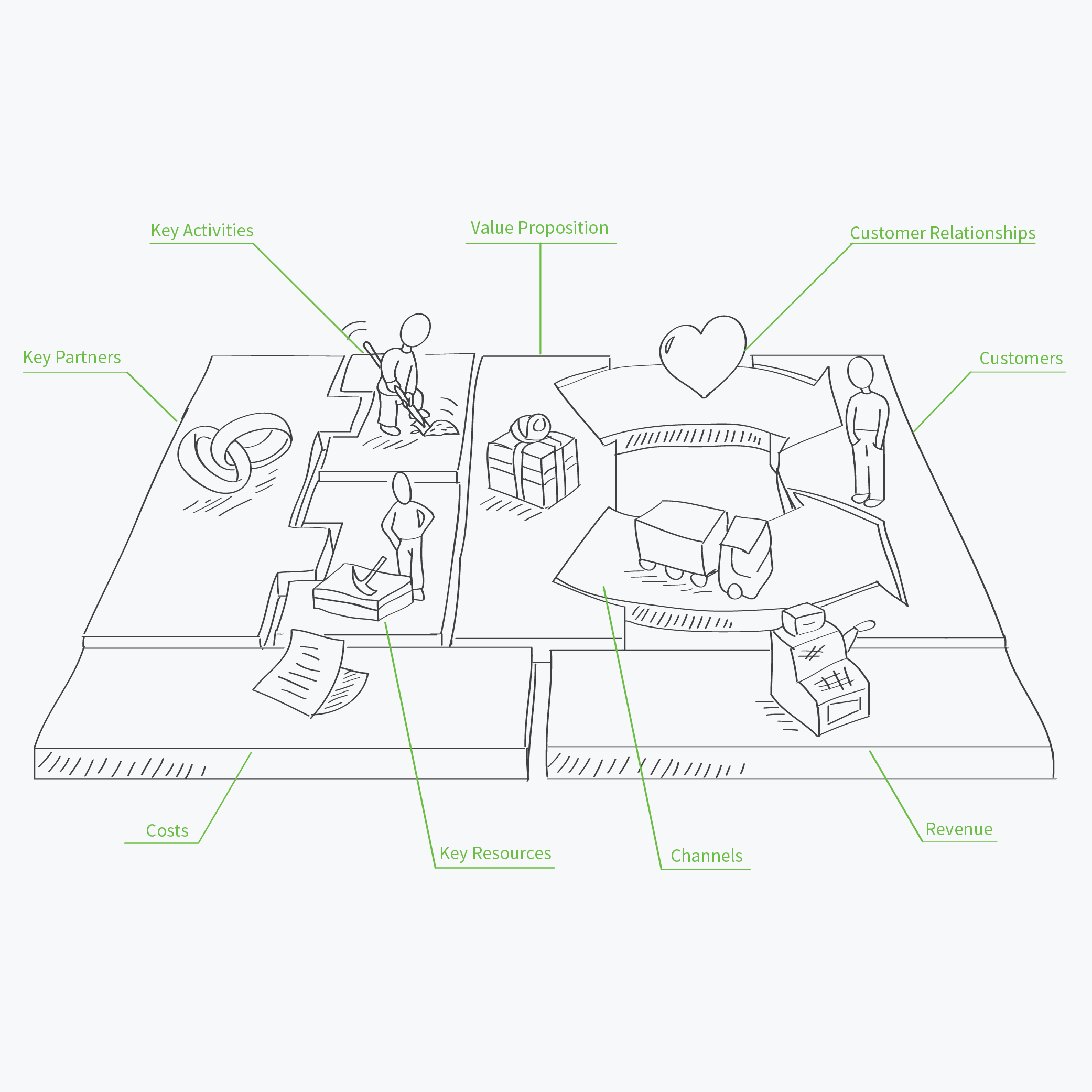The business model
Why?
The business model canvas of Osterwalder and Pigneur (2010) describes the value creation of a business through a visual construction of nine building blocks and their interrelations (see illustration). This provides the students with a creative playground for understanding, discussing and analysing ideas, while offering a common language and collective frame of reference for the students to think creatively about ideas and how to implement them.
How?
When the students have narrowed down their ideas to a selection of their best ones, the teacher asks them to develop these ideas into prototypes of different business models. Thus, the teacher hands out a large sheet of white paper and asks the students to draw an outline of the nine building blocks:
- The customer segment: For whom are we creating value?
- The value proposition: What value do we deliver to customers?
- Channels: How can we reach our customers?
- Customer relationship: What type of relationship does each of our customer segments expect us to establish?
- Revenue streams: For what value are our customers really willing to pay?
- Key resources: Which resources does our value proposition require?
- Key activities: Which key activities does our value proposition require?
- Key partnership: Who are our key partners?
- Cost structure: What are the most important costs inherent in our business model?
Tips
The students should visualize the business model on a collage and use pictures, sketches or cut-outs from papers and magazines, etc. to build it. If the student finds it difficult to fill out all boxes in one go, they can start the activity by focusing on the value proposition (i.e. what value does the company offer and to whom?). Moreover, to evaluate different prototypes of business models, the students can apply a SWOT analysis (see Idea SWOT).
Literature
Alexander Osterwalder and Yves Pigneur,
Business Model Generation: A Handbook for Visionaries, Game Changers, and Challengers, 1st edition (Hoboken, NJ: John Wiley and Sons, 2010).

